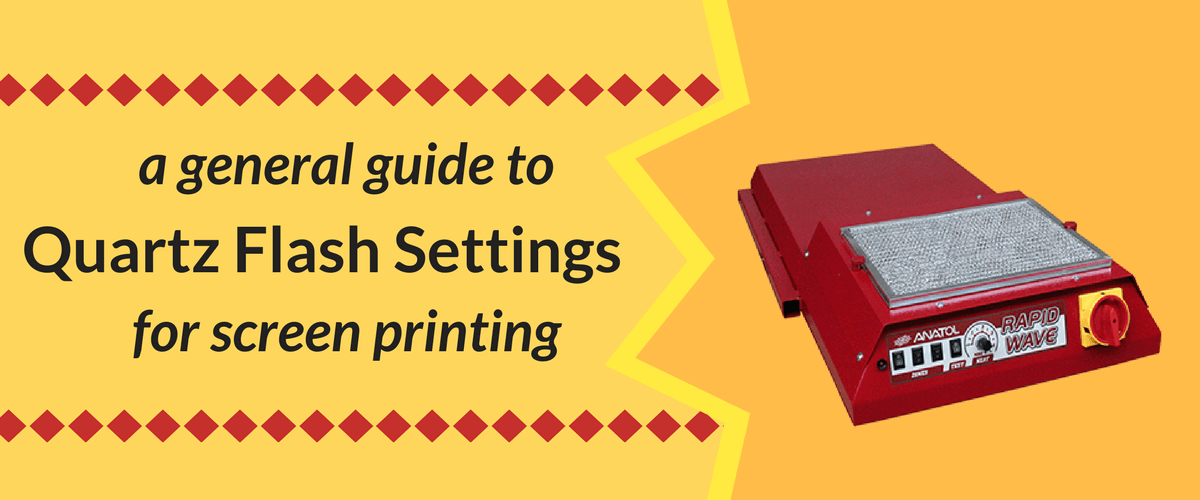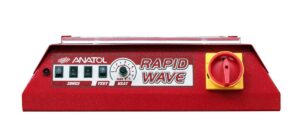No hay productos en el carrito.
es

Revolucionando la industria de la serigrafía a través de tecnología de punta y servicio de calidad
Teléfono: +1 847-367-9760
Anatol Equipment Manufacturing Co.
1429 S Shields Dr
Waukegan, IL 60085

Revolucionando la industria de la serigrafía a través de tecnología de punta y servicio de calidad
Anatol Equipment Manufacturing Co.
1429 S Shields Dr
Waukegan, IL 60085

First off, your pallets should be preheated between 120°F and 160°F or so. Some people choose not to preheat and instead extend the flash’s initial dwell time and adjust the settings as the job progresses.
As a general guide when using plastisol ink with 100% cotton apparel, start at 2.5 seconds and your flash intensity at maximum, or 3.5 seconds with your intensity set to 4 on an Anatol quartz flash. When flashing polyester or nylon, set your flash time to 2 seconds with your intensity at 4. These settings are starting points and may change depending on a number of variables. Please note that as a print run goes on it’ll likely be necessary to adjust your flash as the pallets become hotter. Remember that a successful flash merely gels the surface of the ink so that another layer may be placed over part or all of it.

Anatol’s Rapid Wave quartz flash cure is designed to flash evenly and efficiently.
When using water-based or silicone inks, your flash time should start at 3.5 or 4 seconds and your intensity set at 4 (usually one spot below the max). Keep in mind there are many variables, including apparel density, weave, thickness and weight, the climate of your shop, etc. You can make life easier by accurately recording the apparel details and flash settings that work best in your shop, as these will become your starting points and minimize wasted time.
Below is a table developed from a survey of ink manufacturers’ specifications, which vary significantly. Some of this is due to the type of apparel being printed.
| Type of Ink | Flash Temperature Range (in degrees F) | Quartz Dwell Range (in seconds) |
| Standard Plastisol | 220-250 | 2.5 – 4.0 |
| Fast Flash | 190-210 | 2.0 – 3.5 |
| Water-Based | 220-250 | 3.5 – 5.5 |
| Discharge | 190-220 | 4.5 – 7.0 |
| Silicone Base | 170-210 | 4.0 – 6.0 |
As always, it’s important to get the most current information available as ink technology changes all the time. It’s also a good idea to keep an open mind. Experiment with new inks that might assist your shop’s production or improve the quality of your prints. Record the settings the work best for you.
Looking for some more tips on flash cures? Check out this blog post:
Your message was successfully sent!